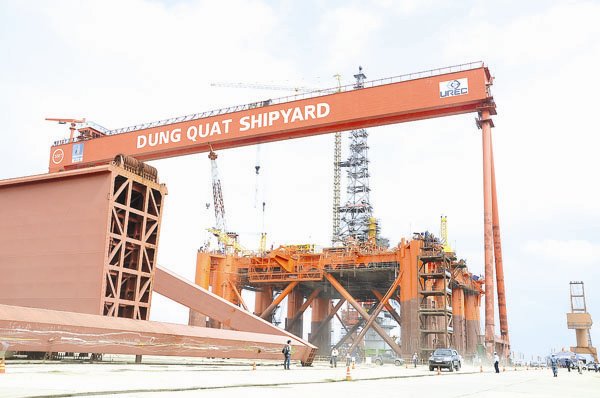Bank bad debts, 12 super-projects incur loss of millions of USD
 |
Tisco began making post-tax profit in 2015 with a profit of VND87 billion. Meanwhile, its net profit in 2016 reached VND203 billion. However, the risk is still very high.
Tisco is implementing the project on expanding production in the second period with the initial estimates of VND3,843.67 billion and the adjusted estimates of VND8,104.91 billion.
The project implementation started in 2007, but the major items of the project in Luu Xa area still have not been fulfilled. The total investment expenses by December 31, 2016 had reached VND4,635.5 billion.
A report from the Hanoi Stock Exchange (HNX) showed that on April 25, SCIC (the State Capital Investment Corporation) sold all 100 million Tisco shares it was holding, or 35.21 percent of Tisco’s shares. With the transaction, SCIC is no longer a big shareholder of Tisco.
SCIC is a powerful state corporation which specializes in making investment in businesses with the state’s money.
| The Q4 2016 audited finance report of the Thai Nguyen Iron & Steel Corporation (Tisco) shows that the company had debts of VND6.078 trillion, half of which were short-term debts. The figure is 2.2 times higher than the stockholder equity. |
The VND1 trillion was invested by SCIC into Tisco when the enterprise issued 100 million shares to raise funds for the projects on expanding production.
The shares were then issued at the price of VND10,000, while it is now traded at VND4,000 per share only.
Tisco is one of the 12 super projects which have had big losses of trillions of dong which have caused headaches to the Ministry of Industry and Trade (MOIT).
The other projects include the Dinh Vu yarn plant, some ethanol and fertilizer plants, the Dung Quat shipbuilding yard, and Phuong Nam Pulp.
The ministry plans to to submit to the Party Politburo and the government plans to deal with the projects.
As the super projects have taken losses, commercial banks have become involved in misfortune. The State Bank of Vietnam (SBV) has submitted to the government a plan to settle bad debts within five years.
MOIT has not revealed how much the 12 projects have borrowed from commercial banks.
However, if considering Tisco case, analysts estimate that the figure could be tens of trillions of dong, which accounts for a large proportion of the banking system's bad debts. Besides, the projects also borrowed money from foreign sources, including loans guaranteed by MOF.
Meanwhile, the government bond issuance has been relying on banks. The total government bonds issued so far reached 18.8 percent of GDP by the end of 2016, according to MOF. And more than 80 percent of bonds were bought by commercial banks.
US$1=VND22,000
What the stars mean:
★ Poor ★ ★ Promising ★★★ Good ★★★★ Very good ★★★★★ Exceptional
Latest News
More News
- From easy money to selective bets: investment prospects for Vietnam in 2026 (January 06, 2026 | 16:51)
- Finance sector lays firm groundwork for 2026 after major reform (January 06, 2026 | 15:30)
- Stock market starts 2026 with growth and governance in focus (January 06, 2026 | 08:45)
- Ho Chi Minh City backs $2 billion AI data centre with dedicated task force (January 06, 2026 | 08:43)
- Vietnam GDP posts second-strongest growth since 2011 (January 06, 2026 | 08:35)
- Double-digit GDP growth within reach with shift to higher-value expansion (January 06, 2026 | 08:33)
- Ho Chi Minh City projects $10.5 billion remittance inflows in 2025 (December 31, 2025 | 18:58)
- Digital shift reshaping Vietnam’s real estate brokerages (December 31, 2025 | 18:54)
- New decree sharpens enforcement in securities market (December 31, 2025 | 18:53)
- Voluntary Sustainability Standards pave way for Vietnam’s agricultural exports (December 31, 2025 | 09:00)

















 Mobile Version
Mobile Version